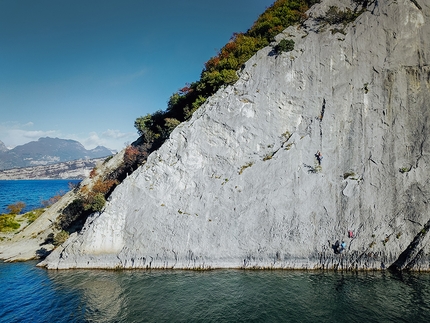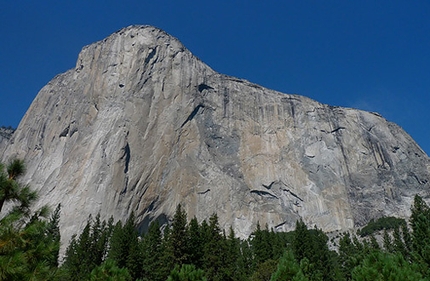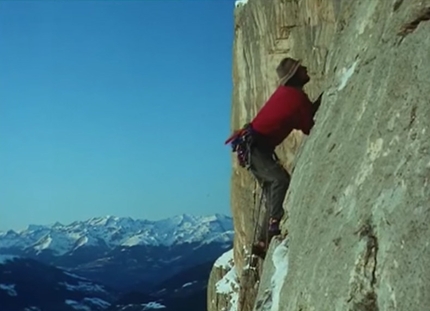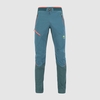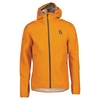Josune Bereziartu, Lynn Hill, Luisa Iovane: three women who have left their mark in the history of rock climbing

 1 / 16
1 / 16 Rikardo Otegi
Rikardo Otegi
Over the years climbing has experienced several key moments, some landmark climbs that have turned out to be a turning point, a total rupture with the past. These ascents have been carried out not only by men, but also by women who, time and time again, have proven to be practically on a par, sometimes even a step ahead, of their male counterparts. In this article written as part of the "Learn to Climb with Vibram" project dedicated to the world of rock climbing, wetake a closer look at three historic climbs that have left an indelible mark in the evolution of this sport: the first-ever female first ascent of a 8a carried out in 1986 by Luisa Iovane in Val San Nicolò, Italy; the visionary first free ascent of The Nose on El Capitan in Yosemite, USA, by Lynn Hill in 1993; the first female 9a redpointed by Josune Bereziartu on Bain de Sang at Saint Loup, Switzerland, in 2002. Three standout moments that helped shape the course of rock climbing.
Luisa Iovane and Comeback
In the 1980s, ie long before the internet as we know it nowadays, before google, youtube, facebook, instagram, smartphones... climbing news passed by word of mouth, via the telephone line and then, only months later, did it appear in the press. It was a long process, beautiful even, with a feel of exploration and discovery. In part this was due to the fact that these were the early years when rock climbing was developing into a sport; during this period of experimentation and evolution the crags, and no longer the mountains, began to take on an important role and the technical difficulties increased dramatically. This was the so-called golden age of sport climbing and in just three years the upper boundaries were pushed forward on three separate occasions: the world’s first 8a+ was established in 1983 by Jerry Moffat when he climbed The Face in Germany’s Frankenjura, the world’s first first 8b was redpointed in 1984 by Wolfgang Güllich on nearby Kanal im Rücken, and the world’s first 8b+ fell in 1985, once again at the hands of Güllich who freed Punks in the gym at Mount Arapiles in Australia. 8a barely existed at the few crags that had been developed back then, and represented an unfathomable difficulty for almost all climbers. In particular, it needs to be said, for women, in a sport historically dominated by men.
It is in this context that the first free ascent of the 8a Comeback by Luisa Iovane in 1986 must be framed; an unheralded ascent that was clearly well ahead of its time. The climb is located in Val San Nicolò, that secret garden of the Dolomites carefully looked after with Bruno Pederiva and Iovane’s climbing partner and partner in life, Heinz Mariacher. While bolting the line Mariacher was surprised by a sudden snowstorm and the results, a severe cold, forced him to stay away from the route for a month, hence the name. On his return Mariacher realised that one of his moves didn’t suit his style, a tiny crimp from which he’d have to do the splits to reach another foothold, which Iovane with her fingers of steel and immense flexibility managed to be far more efficiently. At the time Iovane had already repeated Tom & Jerry and Nisida, two 7c's at Spiaggia delle Lucertole and Swing Area close two Arco, and a few 7c’s in France; caliber climbs that have easily withstood the test of time, but the 8a grade represented a quantum leap in difficulties. Additionally, Iovane had the tackle the considerable psychological question marks associated with an unclimbed route. Would it even go free? And how hard would it be?
In the end, the then 26-year-old didn't even need to many attempts to send the magical grade of 8a, also because back then she never sieged moves or routes. In all likelihood this was the hardest female ascent of that time, certainly in Italy; Catherine Destivelle and Isabelle Patissier had both climbed Fleur de Rocaille at Mouriès the previous year, repeated by Luisa in 1986, but over time the route had been downgraded slightly. So in the climbing history books, the name Luisa Iovane is associated with the line "first female 8a". having said that, the first female 8a+ goes to Destivelle, thanks to her 1988 repeat of the famous Chouca at Buoux, just a few months before Patissier's first female 8b on Sortilèges at Cimaï. All three of these superb athletes were obviously main players in the early climbing competitions, and it was at the first competition ever, Bardonecchia 1985, that Tono Cassin noticed Iovane's talent. He was so impressed that on her return return to the Dolomites she stopped off at Lecco and signed her first contract for Cassin and started her career as a competition climb, which in 1989 resulted in her becoming the first Italian to win a stage of the World Cup, at Yalta in Russia.
It is interesting to note two things. Firstly: that despite dating back to 1986, Iovane’s route with it’s runout on the upper slab still hasn’t been repeated, possibly due to a lack of interest in these difficulties. And secondly, that Iovane unfortunately didn’t note the first free ascent the Comeback in her meticulously climbing diary, as in those years she, and others, still believed that "the crag didn't deserve this attention, since it wasn't a new mountain route." Such as Tempi Moderni, established four years earlier with Mariacher on the south face of Marmolada. Or their Tempi Modernissimi on the other side of the mountain, established in the same year as Comeback. But these are other beautiful stories. Of discovery, experimentation and evolution.
Lynn Hill and The Nose
The first free ascent of The Nose on El Capitan in Yosemite carried out by Lynn Hill in 1993 is considered by many one of the most important ascents in climbing history. Full stop. The strongest climbers in the world had already begun to free the most obvious lines on the huge valley walls. In 1988, for example, Todd Skinner and Paul Piana, swinging leads over a period of 9 days, had chosen the legendary Salathé Wall to mark the start of free climbing revolution on El Cap, but in 1993 the most famous route of all, the first ever on the "Big Stone", still represented an impossible challenge. The Nose, established by Warren Harding, Wayne Merry and George Whitmore in 1958 after 47 days on the wall, was deemed simply too difficult to be climbed free. At least, that’s what the word was at the time.Someone who has never heeded the word impossible is Lynn Hill, the tenacious American climber born in 1961, winner of many of the first climbing competitions, including a historic five Arco Rock Masters, and the first woman to climb 8b+, Masse Critique at Cimai in France in 1990.
In 1993 she teamed up with British climber Simon Nadin, the overall winner of the first-ever World Cup in 1989, and embark up The Nose. Climbing ground-up, the pair managed to free one of the two crux pitches, the famous Great Roof, as the name implies the enormous overhang that bars the way to the upper reaches of the cliff. Then, short of food and low on energy, the pair was forced to bow to the enormous difficulties posed by the pitch just above them, the Changing Corners. They bailed but Hill didn't give up and, later that summer, she returned with renewed energy. Accompanied by Brooke Sandahl, this time Hill abseiled in from the summit and after three days of attempts managed to decipher the moves of the infamous corner, using a bizarre sequence which she would later call the Houdini Move. "Climbing it free would involve an ingenuity and technical finesse that I rarely, if ever, encountered on any other route." explained the 32-year-old at the time. It was just like a highly complex boulder problem, but this time almost 1000 meters above the slow Merced River. Hill had done all the individual moves, but she hadn’t linked them. She sensed, however, that had she been less tired, she would have succeeded without falling and, spurred on by this breakthrough, the pair immediately returned to the valley floor. Then, over a period of four days later that September Hill, belayed by Sandahl once again, created her undisputed masterpiece, climbing all the pitches of The Nose free. Her landmark climb left everyone, indiscriminately, in awe and disbelief. And as if that weren't enough, the following year and the 33-year-old one-upped her first free ascent of The Nose with a stroke of utter genius: starting into the night of 19 September 1994 together with Steve Sutton, Hill climbed The Nose all free in a 23-hour push. In less then a day she completed a climb, and a vision, that was light years ahead of her time.
This undisputed milestone in climbing history was summed up perfectly by German climber Alexander Huber a few years later: "Lynn Hill’s ascent of The Nose was a true exploit, an event that rocked the entire climbing world! Her comment "It goes, boys" was direct, tough and appropriate. In her provocative but nonetheless charming manner she demonstrated that she had shifted the balance in a traditionally male-dominated sport."
Josune Bereziartu and the world’s first female 9a
In order to raise the bar, to redefine the word impossible, one needs immense talent combined with decades of devoted training. That all condense into a few instances of pure perfection. On Tuesday 29 October 2002 the small crag of Saint Loup in Switzerland witnessed this elusive combination when, late that morning, the tenacious Basque climber Josune Bereziartu linked all the moves of one of the first 9a’s in the world, Bain de Sang. Established by Fred Nicole in 1993, with its delicate yet powerful moves "Bain" was considered the quintessential slab, and with her repeat Bereziartu engraved her name in sport climbing history by becoming the first woman in the world to climb the legendary grade 9a. To reach this goal she had invested seven days of attempts spread out over three weeks and two separate trips, but above all she banked on past experience which made her the climber who more than any of her peers had explored the limits of female sport climbing.
Born in 1972, Bereziartu started climbing at the age of 17. She garnered international attention in 1998 when with her repeat of Honky Tonky at Oñate she became the first woman in the world to break into the 8c barrier. Wolfgang Güllich had established the world's first 8c, his Wallstreet in Germany’s Frankenjura, just over ten years earlier and and the 8c grade still represented something absolutely exceptional. The following year Bereziartu consolidated this performance by repeating the 8c’s White Zombie and Ras at Baltzola, while in 2000 she upped the ante for the second time with the first female 8c+, Honky Mix at Oñate once again. Only a few months before the extremely talented Frenchman Liv Sansoz repeated the 8c/c+ Hasta la Vista at Mount Charleston in the USA.
First female 8c. First female 8c+. It is in the wake of these successes that Bereziartu then decided to focus on 9a, with power gruelling workouts - "the basis for climbing" - as the once explained. In 2001 repeated 8c+ by climbing Noia at Andonno, then in 2002 came Bain de Sang, the culmination of dreams.
In just four years Bereziartu had powered women's climbing from 8c all the way to 9a, but still this wasn't enough for the Basque climber, there was even more in store. First off, in November 2004 she repeated Logical Progression, a performance often underrated but absolutely world-class, twice as difficult as usual because the route in question was overseas, at Joyama in Japan, and hailed as one the most difficult routes in the country freed just three years earlier by Dai Koyamada. Then, in 2005, the time was ripe for her masterstroke: her return to Saint Loup in Switzerland and her repeat of Bimbaluna, freed only a year earlier by the other Nicole brother, François. 9a/9a+ was the climb’s unprecedented grade, in a period in which 9a+ were few and far between. This is another shining example of a climb that was way ahead of its time; the 34-year-old she was not "only" at the apex of women's sport climbing, but also of men’s, since 9b had yet to be explored or confirmed.
In short, from 1998 to 2005 Bereziartu's hegemony on rock was absolute. With these redpoints, and with her first female 8b+ onsight completed in 2006, Bereziartu reduced the gender gap on multiple occasions, inspiring thousands of other climbers. In addition to these physical achievements, it is worth dwelling on how they were carried achieved: always with absolute modesty, always with a smile, and always accompanied by Rikar Otegui, her silent life and climbing partner. The pair are a true example worth following. And if for Bereziartu that moment of pure perfection on Bain de Sang represented "one of the happiest days in my climbing career", to the rest of the world it proved that in climbing, absolutely nothing is impossible.
by Nicholas Hobley
Link: eu.vibram.com/en/learn-to-climb-with-vibram/



 Copia link
Copia link











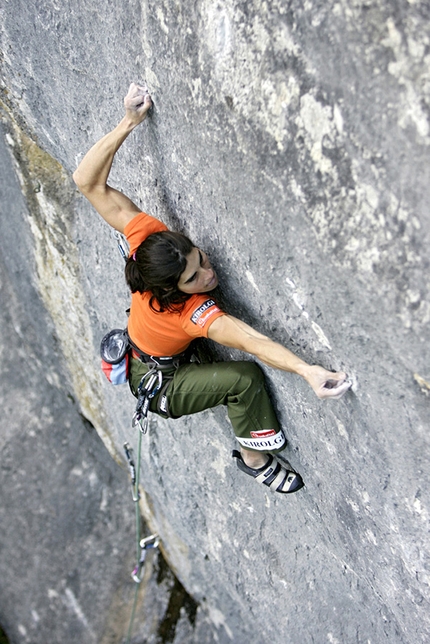

 See all photos
See all photos